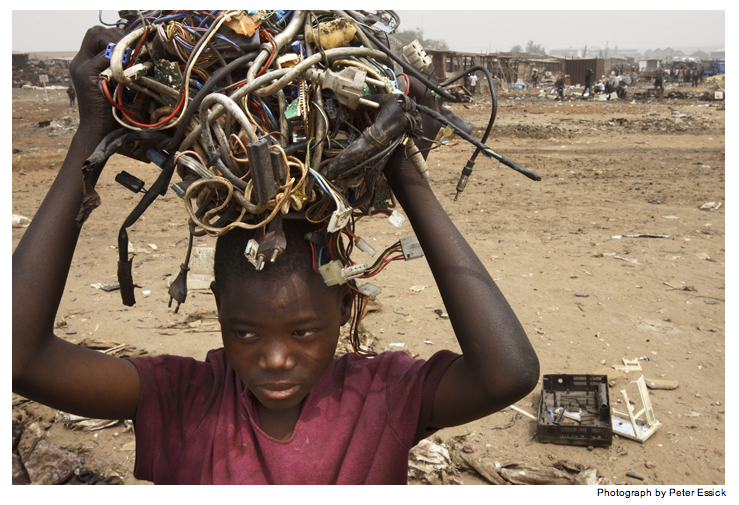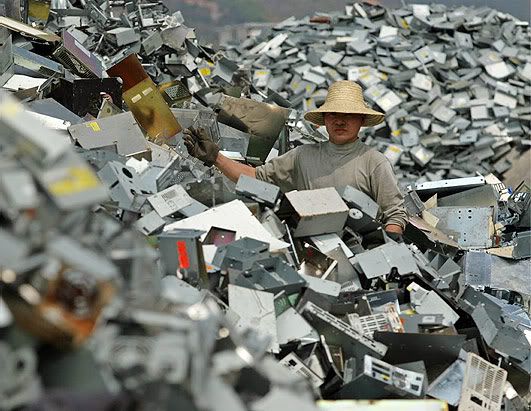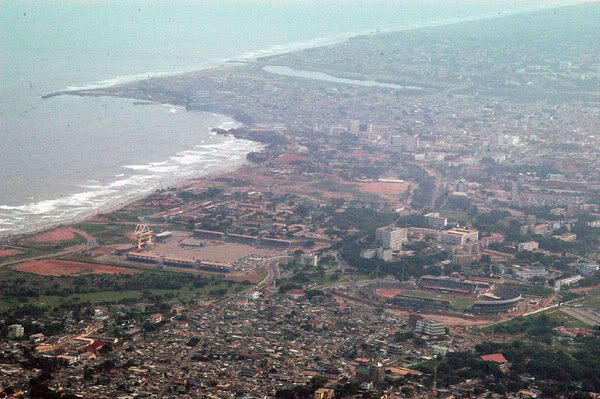 Technology is changing our world. Technological advancements in communication have allowed an unbelievable increase in the mode and frequency of communication, making our planet seem a lot smaller. The development of the printing press, telegraph, telephone, phonograph, radio, television, cellular telephone, satellite, and Internet have removed obstacles of distance and time, allowing people who are literally worlds apart to transmit auditory, verbal, and visual messages instantaneously. Indeed, technology is changing our world, making it necessary for us to adopt a multidimensional perspective.
Technology is changing our world. Technological advancements in communication have allowed an unbelievable increase in the mode and frequency of communication, making our planet seem a lot smaller. The development of the printing press, telegraph, telephone, phonograph, radio, television, cellular telephone, satellite, and Internet have removed obstacles of distance and time, allowing people who are literally worlds apart to transmit auditory, verbal, and visual messages instantaneously. Indeed, technology is changing our world, making it necessary for us to adopt a multidimensional perspective.The picture above illustrates the global affects of technology in a way we seldom address. As our global community becomes more interconnected, the extent to which the actions of one affect another increase. For example, a research study from the Massachusetts Institute of Technology published in the Energy Policy journal found a positive correlation between technology and energy use, resulting in increased greenhouse gas emissions. The landscapes of many less developed countries, like Ghana, are being changed by technology, as a result of the large-scale adoption of technology by more developed countries, like the United States. Citizens of more developed countries should be more accountable for their contributions to this global issue. National Geographic photojournalist Peter Essick is skilled at capturing this consequence of human behavior in a graphic medium. By applying a critical lens and examining the rhetorical tactics used by the photographer, we will be reminded of the impact our individual actions have on others.
 The observational hierarchy created by the framing and cropping of the picture alerts the viewer to where attention should be focused. The image is cropped so that the boy's torso and the load he carries are the only elements in the foreground. The vector of attention followed by the viewer begins at the mass of electronic wires and cords that are being carried on the boy's head. The tangle multicolored of cords are collected from the dumps where electronic devices--mere remnants of the technology they once were--are shipped to be recycled (Carroll). The accumulation of the wires speaks to the vast amount of electronics that are outmoded in more developed countries and sent out of sight and out of mind. The wires are also analogous to the diverse, densely populated world, where as a result of technology we are interconnected across the globe in ways previously unimaginable.
The observational hierarchy created by the framing and cropping of the picture alerts the viewer to where attention should be focused. The image is cropped so that the boy's torso and the load he carries are the only elements in the foreground. The vector of attention followed by the viewer begins at the mass of electronic wires and cords that are being carried on the boy's head. The tangle multicolored of cords are collected from the dumps where electronic devices--mere remnants of the technology they once were--are shipped to be recycled (Carroll). The accumulation of the wires speaks to the vast amount of electronics that are outmoded in more developed countries and sent out of sight and out of mind. The wires are also analogous to the diverse, densely populated world, where as a result of technology we are interconnected across the globe in ways previously unimaginable.The visual path the viewer follows is now directed to boy's face. His gaze is pointed to the left, out of frame, even though the boy's head and body still face forward. The vector of attention follows his, and questions are raised about the argument that his focus of attention warrants. To put this element of the image into context, cultural differences in eye contact should be accounted for. In this instance, the vector of attention created by the direction that he is peering in not only is an instance of logos, but speaks to the pathos, or emotional appeal, of the image also. In many East African cultures, avoiding eye contact is a sign of respect. Is the boy showing respect to the western photographer because of his age or status? He might simply be keeping his focus on the long trip ahead and annoyed at the arrogance of this westerner who impeding his progress, after all time is money, even in the recycling business. Each viewer has a unique set of experiences that determine which set of emotions may be evoked by the focus of the subject's eyes.
The red shirt that the boy wears is also builds upon the logos of the text. It is dirty and oversized, probably provides little protection from the hot Ghanaian sun. Color interpretations are also contingent on cultural background, so the emphasis of the boy's shirt, supporting logos by cropping, may also elicit an emotional response, supporting pathos. Red can symbolize courage and sacrifice, as this boy, if anything, is a hard worker with the courage to harvest wires from undesired electronics for survival. Even though he is young he is working to put food on his family's table or clothing on their backs. Is he sacrificing a chance to get an education so he can give back to those around him, or is education not even a concern because his very survival contingent on his performance at this task? He is also demonstrating courage and sacrifice of his personal well being. An article from the Lincoln Journal Star calls attention to how the "primitive" electronic waste, or e-waste, recycling process "includes toxic metals and acids" that "imperil [workers'] health." When workers come in contact with the electronic equipment, they are being exposed to many carcinogens. The boy has the courage to put himself at risk, but then again he may have no choice. Will those who view this image that have contributed to the electronic waste that would harm so many have the courage to make a stand, reducing consumption of electronic goods? Will those who have help those who have not who are working in inhumane conditions just to survive?
 The changes technology brings to places like Accra, Ghana would be hard to visualize without images like this one, which create awareness of the negative impacts of technology. Is this communities unwitting involvement in this electronic recycling process such an adverse affect? A recent article from the Milwaukee Journal Sentinel cited that the adoption of an e-waste recycling program could "create up to 2,000 new jobs and millions of dollars in revenue for Wisconsin." Some would say that the export of used electronics for recycling provides jobs to many workers that would have none otherwise. In the United States, the Environmental Protection Agency does not regulate the disposal of electronic waste, which is why the United States is able ship the worthless goods to someone else who will be bothered with them (Discover Magazine Blog). We might be able to shift the evidence of our own technological waste to another party, but we cannot deny the global interconnectivity, which means we will eventually have to come to terms with our actions.
The changes technology brings to places like Accra, Ghana would be hard to visualize without images like this one, which create awareness of the negative impacts of technology. Is this communities unwitting involvement in this electronic recycling process such an adverse affect? A recent article from the Milwaukee Journal Sentinel cited that the adoption of an e-waste recycling program could "create up to 2,000 new jobs and millions of dollars in revenue for Wisconsin." Some would say that the export of used electronics for recycling provides jobs to many workers that would have none otherwise. In the United States, the Environmental Protection Agency does not regulate the disposal of electronic waste, which is why the United States is able ship the worthless goods to someone else who will be bothered with them (Discover Magazine Blog). We might be able to shift the evidence of our own technological waste to another party, but we cannot deny the global interconnectivity, which means we will eventually have to come to terms with our actions.The framing of the image is another structural element that builds the overall logos of this text. The way that the photographer establishes the boundaries of the image can corroborate the argument as well. The proximity of the photographer to the boy is parallel to how close the audience is to this global issue. Each of our actions can affect other, even if they are miles away. Displacing an older computer model when we choose to purchase a newer one contributes to this global issue of technological waste. The composer of this text wants viewers to feel a part of the image, to represent that we are a part of the process and therefore a part of the problem.
 It seems that technology has altered the course of human history. The impact that technology has on our world is not always favorable. The benefits to society that technology creates can sometimes be overshadowed by the juxtaposition of the extreme waste that is produced from the cycle of consumerism that accompanies the latest technological advancements of consumer electronics. This juxtaposition helps create an appeal to logos, and is evidenced in the image by the stark contrast between the boy and his burden in the foreground with the barren, earth-filled background. Comparing the technological debris and litter strewn on the ground when compared with the earth can evoke pathos also. Technology doesn't belong out in the elements. Electronics are clean, antiseptic, and synthetic. The earth is dusty and dirty, and natural. How can these two entities exist in the same environment? This line of questioning allows us to draw many parallels (global, environmental, philosophical, etc.) in the structural composition of this image. Can human kind continue to exist on earth, especially with the risk of impending overpopulation? Even though the virtual proximity of our global community has become more interconnected, the size of our global community has continued to increase. According to the most recent estimate by the US Census Bureau, the global population is estimated to be roughly 6.79 billion people, with many of the additional inhabitants resulting from the exponential population explosion occurring in most less developed countries. If our population continues to grow, with the situation represented in this image become more common? Can nature survive under the burden of technology or, more specifically, technological waste? We know that technology is constantly changing, but what will the next change consist of?
It seems that technology has altered the course of human history. The impact that technology has on our world is not always favorable. The benefits to society that technology creates can sometimes be overshadowed by the juxtaposition of the extreme waste that is produced from the cycle of consumerism that accompanies the latest technological advancements of consumer electronics. This juxtaposition helps create an appeal to logos, and is evidenced in the image by the stark contrast between the boy and his burden in the foreground with the barren, earth-filled background. Comparing the technological debris and litter strewn on the ground when compared with the earth can evoke pathos also. Technology doesn't belong out in the elements. Electronics are clean, antiseptic, and synthetic. The earth is dusty and dirty, and natural. How can these two entities exist in the same environment? This line of questioning allows us to draw many parallels (global, environmental, philosophical, etc.) in the structural composition of this image. Can human kind continue to exist on earth, especially with the risk of impending overpopulation? Even though the virtual proximity of our global community has become more interconnected, the size of our global community has continued to increase. According to the most recent estimate by the US Census Bureau, the global population is estimated to be roughly 6.79 billion people, with many of the additional inhabitants resulting from the exponential population explosion occurring in most less developed countries. If our population continues to grow, with the situation represented in this image become more common? Can nature survive under the burden of technology or, more specifically, technological waste? We know that technology is constantly changing, but what will the next change consist of? The picture of the boy carrying a load on their head creates a visual analogy of the water bearer. In many less developed countries, there is little access to clean water. According to the British Journal of Medicine, "contamination of water during collection, transport, and storage at home presents a serious risk to health for millions of households in developing countries." Women from both urban and rural areas in these countries sometimes have to walk miles to transport clean, drinkable water from the nearest eligible water source back to their community. This is an important job, as clean water is necessary for survival. Does the job the boy is doing have the same importance in his community? Because of the load he carries, he ensures survival for his community, similarly to the water bearer. Although he is young, he has an important role in his community. This contrasts with the role of most preteens and teenagers in more developed countries like America. How long will we take for granted the struggle that our peers in the global community have to endure?
The picture of the boy carrying a load on their head creates a visual analogy of the water bearer. In many less developed countries, there is little access to clean water. According to the British Journal of Medicine, "contamination of water during collection, transport, and storage at home presents a serious risk to health for millions of households in developing countries." Women from both urban and rural areas in these countries sometimes have to walk miles to transport clean, drinkable water from the nearest eligible water source back to their community. This is an important job, as clean water is necessary for survival. Does the job the boy is doing have the same importance in his community? Because of the load he carries, he ensures survival for his community, similarly to the water bearer. Although he is young, he has an important role in his community. This contrasts with the role of most preteens and teenagers in more developed countries like America. How long will we take for granted the struggle that our peers in the global community have to endure?In reflecting on life in his book Unweaving the Rainbow, biologist Richard Dawkins once described the current period of human development, stating "After sleeping through a hundred million centuries we have finally opened our eyes on a sumptuous planet, sparkling with color, bountiful with life [...]." This insightful comment is applicable to the recent changes, resulting from technological advances, that have "opened our eyes" on a global scale. The changes in technology have led to new perspectives and information. This increased knowledge of the world that surrounds us shifts our understanding of issues, both in a local and global context. Technological advancements can be a two-edged sword, both beneficial and unfavorable. As global citizens, we should be aware of the far-reaching effects of technology. A tangle of cords can serve as a simple reminder of the interconnectivity of our actions.
Works Cited
Carroll, Chris. "High-Tech Trash." National Geographic Jan. 2008. Accessed 8 Oct. 2009, http://ngm.nationalgeographic.com/2008/01/high-tech-trash/carroll-textEssick, Peter. "High-Tech Trash." National Geographic Jan. 2008. Accessed 8 Oct. 2009, http://ngm.nationalgeographic.com/2008/01/high-tech-trash/essick-photography.
Eckaus, R. S., and I. S. Wing. "The implications of the historical decline in US energy intensity for long-run CO2 emission projections." Energy Policy 35.11 (2007): 5267-5286. Accessed 13 Oct. 2009, http://www.sciencedirect.com/science?_ob=ArticleURL&_udi=B6V2W-4P6TH5N-1&_user=10&_coverDate=11%2F30%2F2007&_alid=1048979537&_rdoc=1&_fmt=high&_orig=search&_cdi=5713&_sort=r&_docanchor=&view=c&_ct=1&_acct=C000050221&_version=1&_urlVersion=0&_userid=10&md5=9d31048e7fd6b13108f7fcb661a8ac7e.
Environmental Letters. "New technology may increase emissions." Environmental Research. Accessed 14 Oct. 2009, http://environmentalresearchweb.org/cws/article/futures/32111.
"Eye contact." Wikipedia, the free encyclopedia. Accessed 13 Oct. 2009, http://en.wikipedia.org/wiki/Eye_contact#Cultural_differences.
"Government Report Slams EPA for Lax Regulation of Electronic Waste." Discover Magazine Blogs. Accessed 15 Oct. 2009, http://blogs.discovermagazine.com/80beats/2008/09/18/788/.
Johnson, Tim. "Chinese city is world's digital scrap heap." The Lincoln Journal Star 12 Apr. 2006. Accessed 14 Oct. 2009, http://journalstar.com/news/science/article_5d2a1bc6-7f0b-57ba-ac4c-4ace61e68879.html.
"LDC criteria." United Nations: Development Policy and Analysis Division. Accessed 15 Oct. 2009, http://www.un.org/esa/policy/devplan/profile/criteria.html.
Olsen, Andy. "Get smart about electronic waste." Milwaukee Journal Sentinel 16 Sep. 2009. Accessed 14 Oct. 2009, http://www.jsonline.com/news/opinion/59534352.html.
"Population Trends: Rapid Growth in Less Developed Regions." United Nations Population Fund. Accessed 10 Oct. 2009, http://www.unfpa.org/pds/trends.htm
Tumwine, James. "Clean drinking water for homes in Africa and other less developed countries." British Journal of Medicine 331.7515 (2005): 468–469. Accessed 15 Oct. 2009, http://0-www.ncbi.nlm.nih.gov.library.unl.edu/pmc/articles/PMC1199012/.
